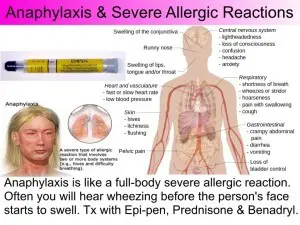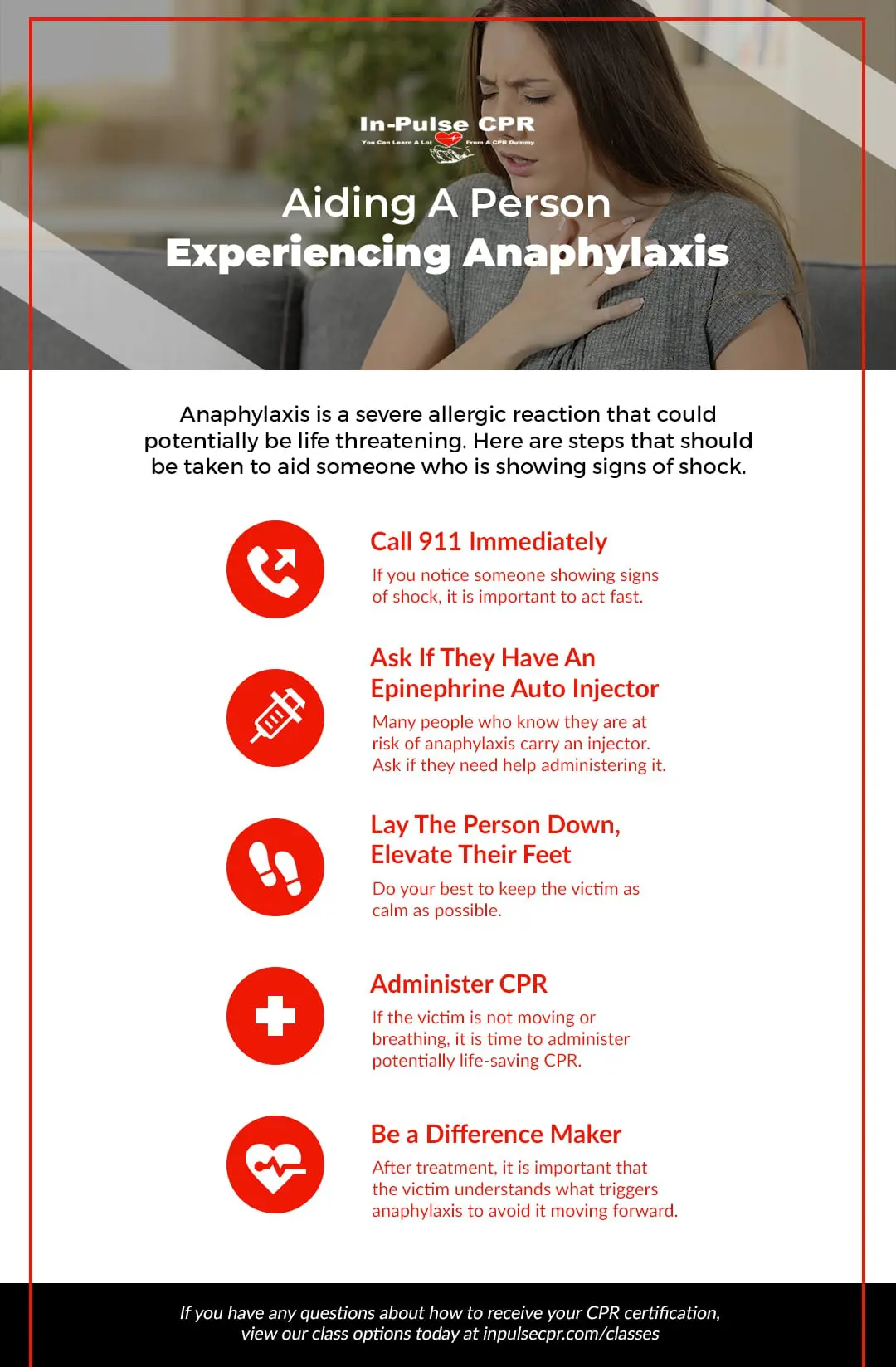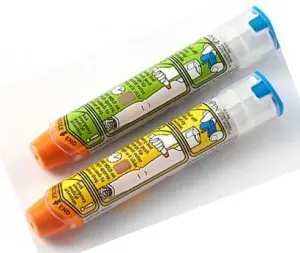Anaphylactic Shock
While CPR does not immediately come to mind when one thinks of allergy treatment, in times of anaphylactic shock CPR is a versatile and very applicable life saving tool.

Allergies can range in severity from a bothersome, annoying runny nose and itchy eyes all the way to nausea and cardiac arrest. It is estimated that allergies affect 30% of adults and up to 40% of children, with allergic disease, including asthma, being the fifth most present chronic illness in Americans.
What exactly are allergies? The human body’s immune system is designed to release antibodies to fight off invading viruses and bacteria. However, occasionally antibodies will be triggered by a substance that is not necessarily harmful or dangerous. This is referred to as an allergic reactions and can be the result of a particular food, inhalant, medication, insect sting, substance, or particulate like pollen or pet dander.
While most people’s allergies remain seasonal or environmental and can be treated to some extent with over the counter or prescription antihistamines or decongestants, some may experience severe reactions that may result in impaired breathing and be cause for serious concern. When someone’s reaction results in hives, swelling of the lips, tongue, and mouth, they are experiencing anaphylaxis. This condition often affects the airways and lungs too, and can be life threatening. While some people use the term “anaphylaxis” and “anaphylactic shock” interchangeably, this is not correct. Anaphylactic shock occurs when someone’s anaphylaxis is severe enough to cause inadequate blood flow to vital organs.


If someone is experiencing anaphylaxis, it’s important to act quickly and remain very observant. Call 9-11 immediately and ask the person if they have an epinephrine auto injector accessible. If so, ask them if they need help in administering it. If this is a first experience for them, they may not actually have such a device on them. Keep the person as calm as possible and have them lie down on their back with their feet raised about a foot. If the person is vomiting or bleeding, they should lay on their side as opposed to their back.
If the person suffering from anaphylaxis is not breathing or moving, it is time to administer potentially life saving CPR while waiting for emergency responders to arrive on the scene. CPR is an invaluable tool when properly applied. The majority of cardiac arrest victims die before EMTs are able to reach them. Performing CPR on a victim of anaphylactic shock as soon as possible can greatly increase their chances of survival.
Related articles: Respiratory emergencies in children Is she allergic to me First Aid Camping Tips
First Aid and Medical Information at Your Fingertips Can you get sick by performing CPR?


